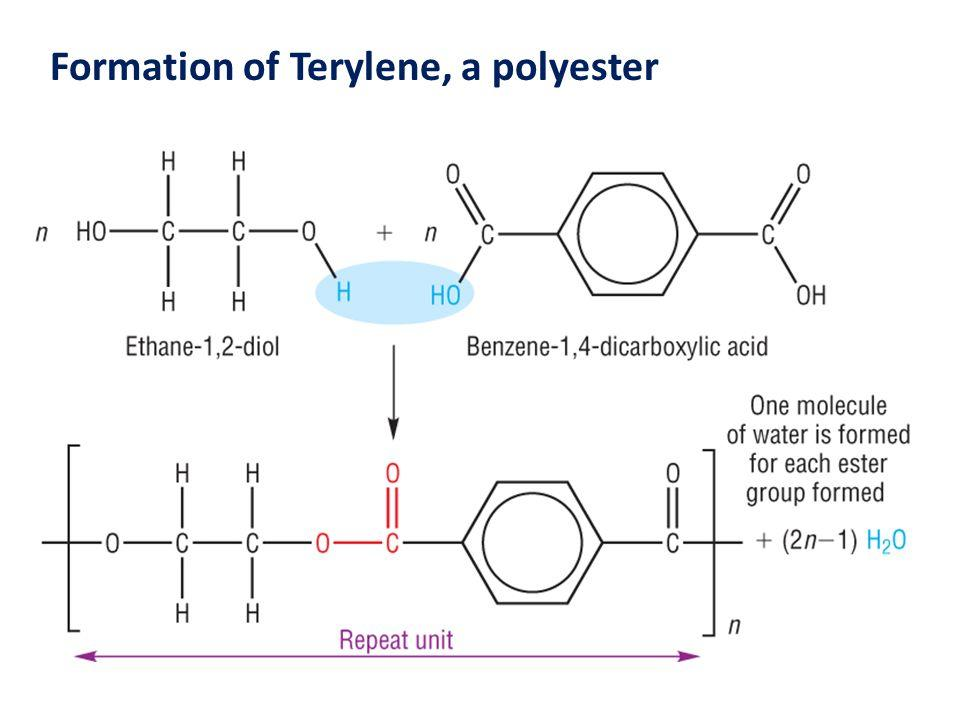
a) Write partial structure of:
i).Neoprene
ii).Terylene (Dacron)
iii).Nylon – 6
b) Explain the preparation of Buna-N with equation
Answer
467.7k+ views
Hint: The formation of a three-dimensional network through continuous linking of a single molecule or more, forms a polymer. It can take place simply through addition of the molecules, loss of water molecules, or combining of two or more molecules simultaneously.
Complete answer:
The polymerisation is a process through which the single units (monomers) are linked together into a long three-dimensional chain to form polymers.
- In the Neoprene, it is obtained by the linking of the chloroprene or $\text{2-chloro-1,3-butadiene}$, which is the single monomer to an n-membered three-dimensional network. This involves the addition of the monomers, so it is known as the addition polymerisation.
The partial structure is shown in brackets, as given below:

- In the Terylene, it involves the linking of two monomers simultaneously one after the other, along with the loss of water during the linkage into the n-network. Thus, it is known as the condensation polymerisation. The two monomers involved are ethylene glycol and terephthalic acid.
The partial structure is a shown in brackets, as given below:

- In the case of Nylon-6, it is formed by the polymerisation of the caprolactam monomer through the ring opening process in the presence of acid (catalyst) and vapour. The partial structure is given in brackets as given below:

- Similarly, the Buna- N polymer also involves the polymerisation process of a mixture of $\text{1,3-butadiene}$ and $\text{acrylonitrile}$ in the presence of the peroxide catalyst. Thus, it is a process of two polymer additions known as copolymerisation. The reaction takes place as follows:

Note:
It can be seen that the polymerisation process involves various methods of linking like simple addition, loss of water molecule, ring opening and growth, or combining of two molecules.
Complete answer:
The polymerisation is a process through which the single units (monomers) are linked together into a long three-dimensional chain to form polymers.
- In the Neoprene, it is obtained by the linking of the chloroprene or $\text{2-chloro-1,3-butadiene}$, which is the single monomer to an n-membered three-dimensional network. This involves the addition of the monomers, so it is known as the addition polymerisation.
The partial structure is shown in brackets, as given below:

- In the Terylene, it involves the linking of two monomers simultaneously one after the other, along with the loss of water during the linkage into the n-network. Thus, it is known as the condensation polymerisation. The two monomers involved are ethylene glycol and terephthalic acid.
The partial structure is a shown in brackets, as given below:

- In the case of Nylon-6, it is formed by the polymerisation of the caprolactam monomer through the ring opening process in the presence of acid (catalyst) and vapour. The partial structure is given in brackets as given below:

- Similarly, the Buna- N polymer also involves the polymerisation process of a mixture of $\text{1,3-butadiene}$ and $\text{acrylonitrile}$ in the presence of the peroxide catalyst. Thus, it is a process of two polymer additions known as copolymerisation. The reaction takes place as follows:

Note:
It can be seen that the polymerisation process involves various methods of linking like simple addition, loss of water molecule, ring opening and growth, or combining of two molecules.
Recently Updated Pages
Using the following information to help you answer class 12 chemistry CBSE

Full Form of IASDMIPSIFSIRSPOLICE class 7 social science CBSE

In case of conflict between fundamental rights of citizens class 7 social science CBSE

Can anyone list 10 advantages and disadvantages of friction

What are the Components of Financial System?

Complete the letter given below written to your Principal class null english null

Trending doubts
Show variation of resistivity of copper as a function class 12 physics CBSE

Electrolysis of dilute H2SO4 generates H2S2O8 What class 12 chemistry CBSE

Explain with a neat labelled diagram the TS of mammalian class 12 biology CBSE

How do you convert from joules to electron volts class 12 physics CBSE

A convex lens is placed in water Its focal length A class 12 physics CBSE

Distinguish between asexual and sexual reproduction class 12 biology CBSE




